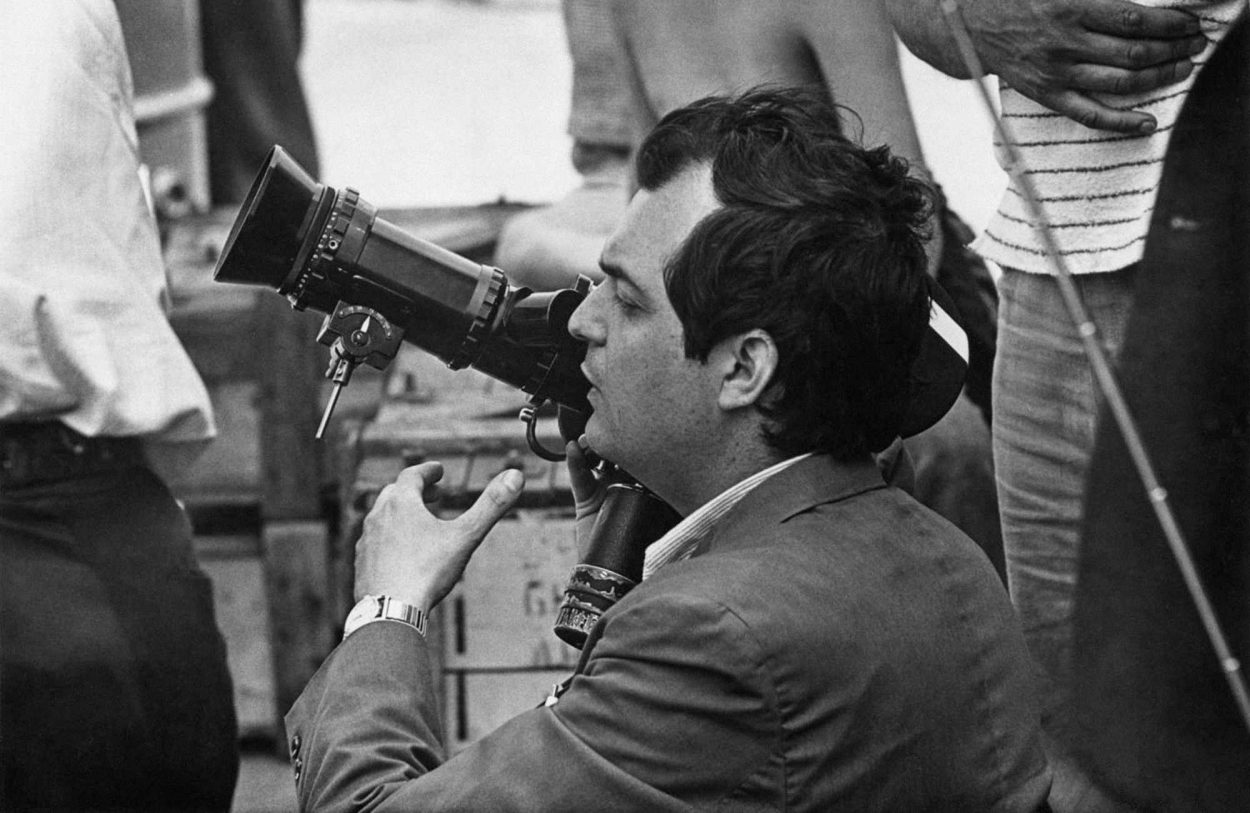When someone dies young, our sense of balance about how the world should work, what is fair or just, gets knocked off its axis. We mourn not just the loss of the person, but all the opportunities and things that person will never have, or accomplish, that dies with them. Death steals from the young the time that’s necessary to build a legacy – whatever that may be. What makes James Dean’s story so unique and enduring, is that his legacy was conceived through death, forged in three performances brimming with intensity, and an underlying melancholy that, in hindsight, seemed to convey the passions of a man who knew he wasn’t long for this world. His signature role, the one that Dean is most identified with, is Nicholas Ray’s Rebel Without a Cause.
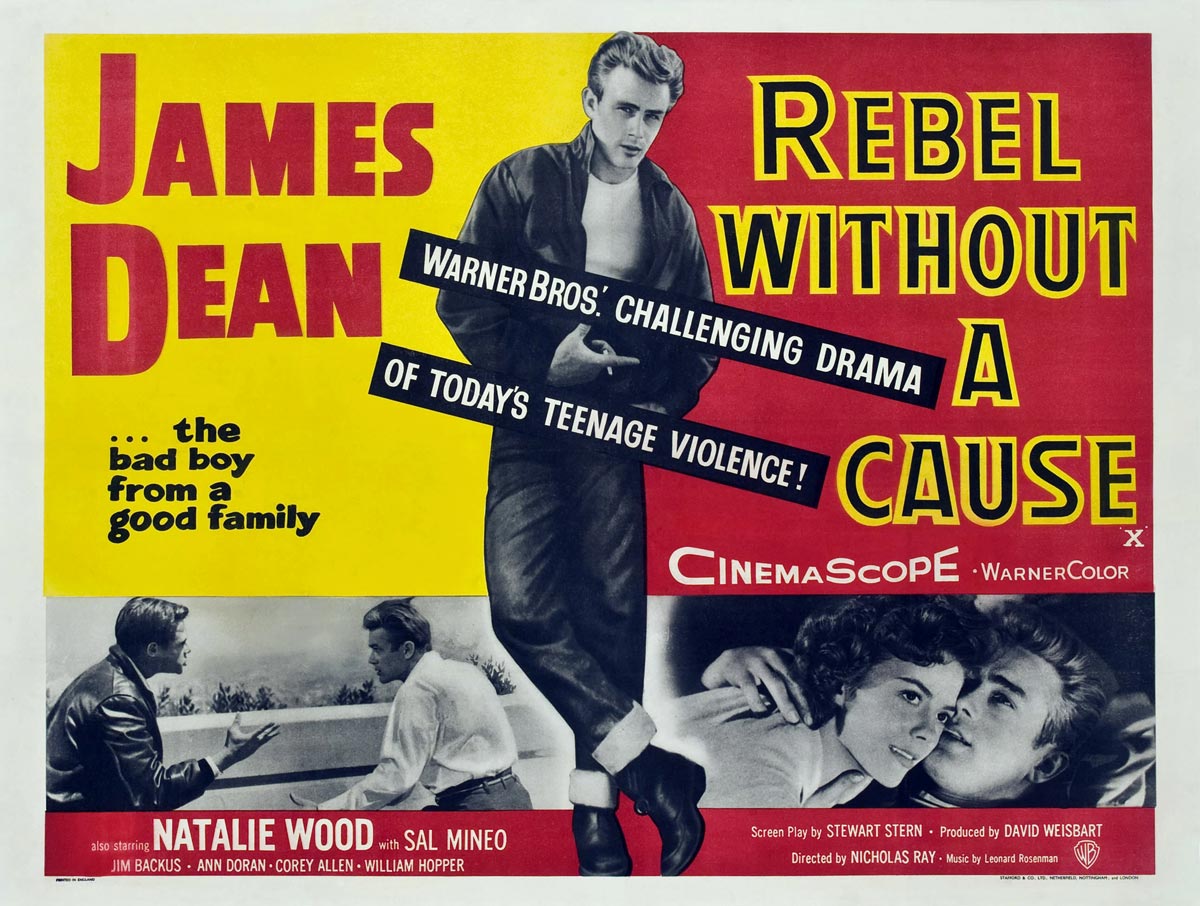
Nicholas Ray and James Dean achieved critical success with their first films They Live by Night and East of Eden respectively, with Ray influencing filmmakers with his couple on the lamb-genre-touchstone (Truffaut called Ray “the poet of nightfall”), and Dean defining the teenager caught between his longing for acceptance, and the confusion of how to enter the adult world. It’s only fitting that these two men would work together on Rebel after Ray learned of Dean through his mentor Elia Kazan, with the real rebel being Nicholas Ray, given what he went through with the Warner Brothers brass, in order to shape the movie into the culturally significant film that it became.
Warner Brothers controlled the rights to Dr. Robert M. Lindner’s controversial book – Rebel Without a Cause: The Story of a Criminal Psychopath – that was released in 1944. The studio had been unsuccessful in adapting the book about the 46 sessions of hypnosis that unlocks the childhood memories of the psychotic youth “Harold,” that holds the key to his criminal behavior. The studio had planned on the property being a vehicle for Marlon Brando, but without a script, Brando passed and the window closed.
The box office success of Johnny Guitar (1954) caught the attention of Warner Bros. and they approached Ray with an offer to direct Rebel, which he initially declined. The austere nature of the book was proving to be a puzzle that was too difficult to solve, until Ray cracked the code by making the troubled teenagers into middle-class kids from “good homes”. He accepted the job, and wrote the story for Rebel that screenwriter Irving Shulman adapted, and was ultimately brought into focus by Stewart Stern.
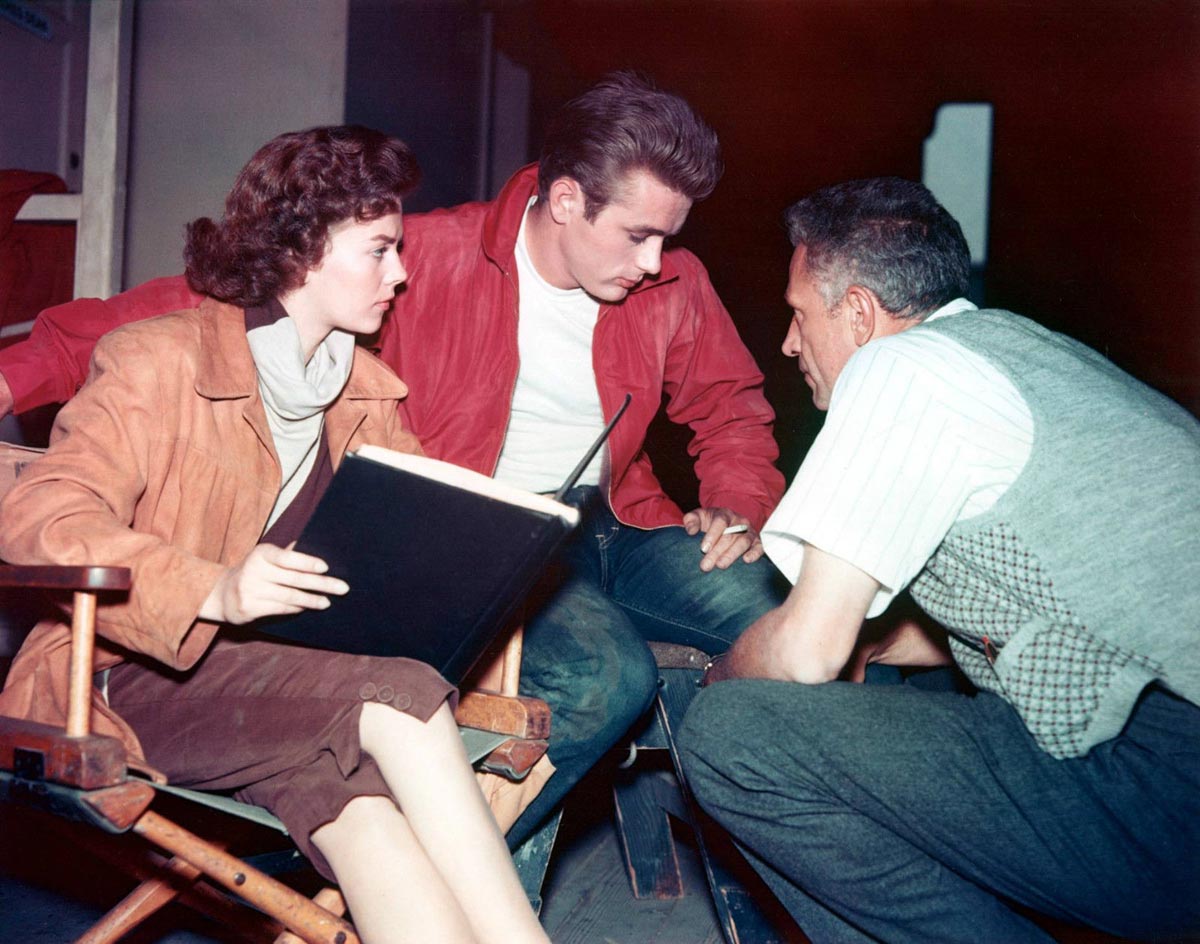 Natalie Wood, James Dean and director Nicholas Ray
Natalie Wood, James Dean and director Nicholas Ray
For Ray, there was only one actor to play the lead and that was James Dean, fresh off his big screen debut in Kazan’s East of Eden, for which he would be nominated for an Academy Award. Rebel was considered to be a B-picture by the studio, initially scheduled to be shot in black and white, with actors such as Tab Hunter and Robert Wagner pushed on Ray, but he would not be denied and set out to convince Dean that together they would make an important film. Although Dean agreed to play Jim Stark and signed a contract, he grew wary of both Ray and the picture, including a disappearing act by the mercurial star just before filming was slated to begin. An apoplectic Warner Brothers were preparing to replace the actor and file a breach of contract lawsuit against their young star, before he returned at the 11th hour with renewed focus.
After Ray cycled through the studio’s casting choices for the role of Judy, including Debbie Reynolds and Jayne Mansfield, Ray wrote in a memo to Warner Bros. that after testing 32 kids “There is only one girl who has shown the capacity to play Judy, and she is Natalie Wood.” Despite being all of 16-year’s old, Natalie Wood and Nicholas Ray would become lovers before the filming of Rebel would even begin. The actress, perhaps exploring the depths of the sexual awakening within her Judy character, was also maintaining an affair with co-star Dennis Hopper. Although Woods was known as the child actor from Miracle on 34th Street, Rebel would transform her into a serious actress with a smoldering screen presence.
Ray went against traditional casting of the day where older actors played younger, by adding a second 16-year-old in Sal Mineo. With Ray’s guidance, Mineo plays Plato as an alienated homosexual, including a not so subtle photo of Alan Ladd in Plato’s locker. Mineo would later proudly proclaim “I played the [screen’s] first gay teenager” in Rebel, and although he’s been a champion of the gay community, both Mineo and Dean were in fact bisexual.
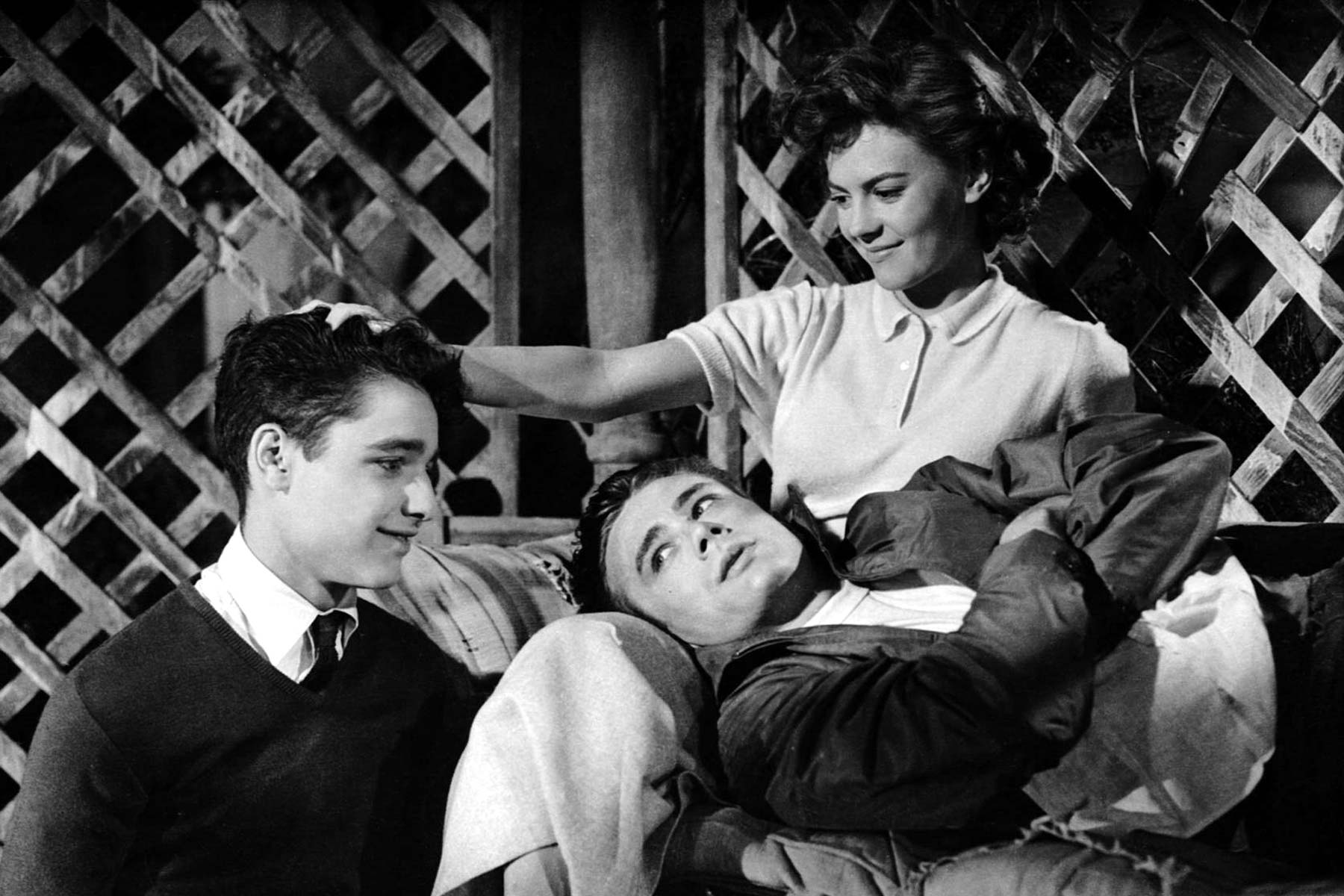
Rebel was that rarest of films in 1955, where both gay and straight audiences had lead protagonists to identify with, whose onscreen struggles to be accepted by their peers, to be cool, to find footing in the their own skin, were brought to life through the intensely personal performances of Dean, Mineo, and Woods. Nicholas Ray constructed a world where the teenagers fought against peer pressure in a zero-sum environment, and although the flesh of the message has grown a bit tattered, the bones of it are still strong – perfectly preserved as if in a museum.
Not unlike Hamlet, if Rebel Without a Cause were a play, a director would have countless storylines to focus on: the destructive nature of sexual politics, bullying, coming to terms with one’s sexuality, how the young deal with death, the lack of a role model within the home, and how a young man makes the adjustment into manhood, are as material today for young adults as they were in the mid-fifties.
With the off-screen and onscreen obstacles that surrounded Rebel, Ray was fermenting quite the bitches brew. There was James Dean’s aloofness and the free acting reign Ray gave him during filming, that some of the film’s veteran actors found abrasive. There were Natalie Woods’ romances, Sal Mineo walking a razor’s edge with his ambiguously gay performance, prompting a production code officer to send a note to Jack L. Warner, warning him “it is of course vital that there be no inference of a questionable or homosexual relationship between Plato and Jim” and of course, Nicholas Ray’s battles with the studio.
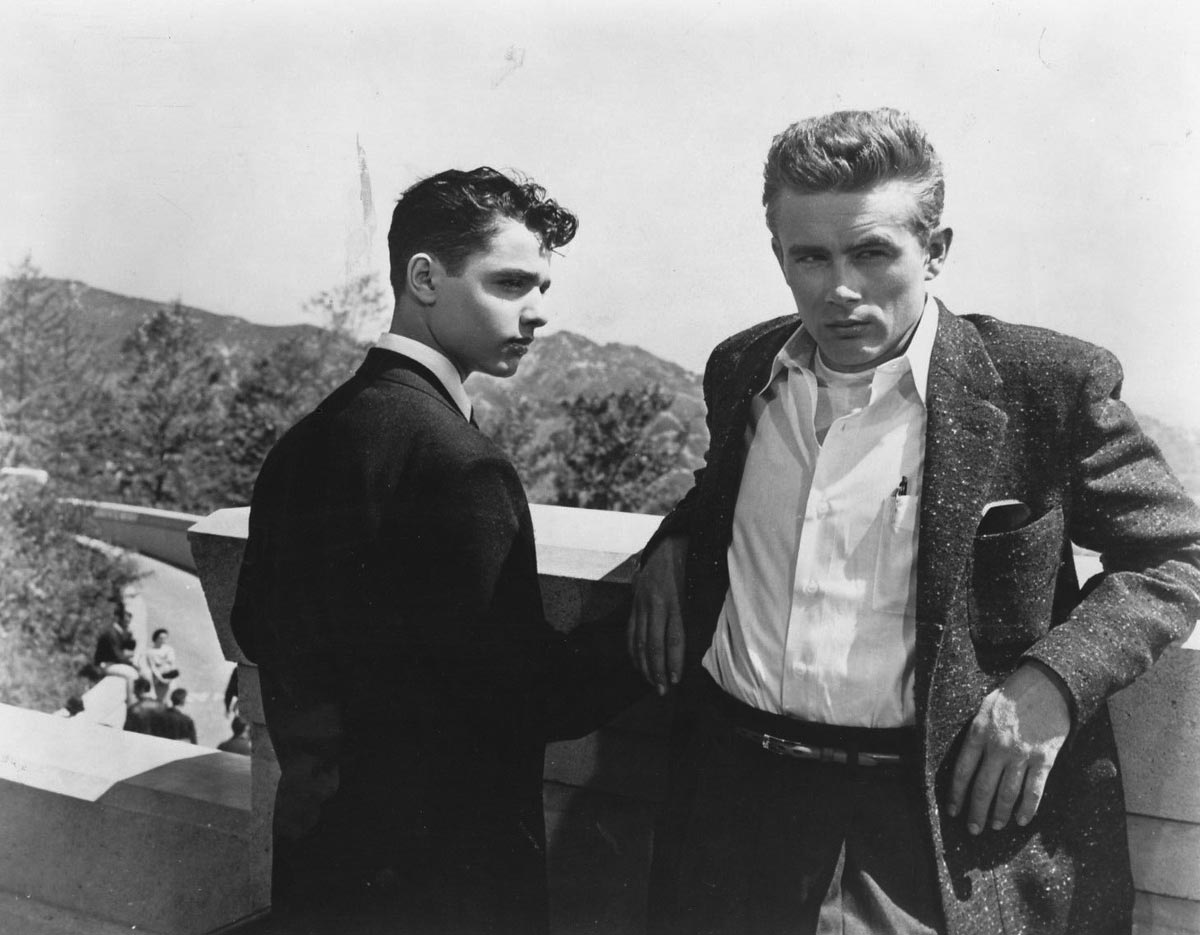
The movie shouldn’t have become the cultural phenomena it became given all the drama surrounding the picture, and yet here we are all these years later. There is a celluloid graveyard of films that have died with far fewer distractions. There’s something almost mystical about the film, a preordained destiny for what the film would become, and what would become of the film’s stars.
When Jim Stark is first arrested and brought to the police station, it’s the cops who are wearing leather jackets while Jim is clad in a suit, looking like a kid whose only problem is that he can’t break par at the local country club. Later, when we are first introduced to his family – his tuxedo wearing father (a steady performance by a hen-pecked Jim Backus), Jim’s overbearing mother wrapped in furs (a boiling kettle whistle of a turn by Ann Doran), and the apple doesn’t fall far from the tree grandmother who’s also in fur (Virginia Brissac), we can envision a home life that would resemble nails on a blackboard. This is not a poor family on the wrong side of the tracks, but rather a family that’s tried unsuccessfully to use money to buy their son’s love, “You buy me many things.” A family that’s resorted to moving in order to protect their son.
Natalie Wood’s Judy is mistaken for a street walker for prowling around after curfew, dressed more like she’s leaving a company Christmas party, than a teenage high school student. Judy is a siren in her red lipstick and red dress, and when Chief Ray Fremmick (the tough love dispensing Edward Platt) tells Judy he’s called her mother to pick her up from the police station instead of her father, her angry reaction at not getting her father’s attention informs us that Judy’s a handful.
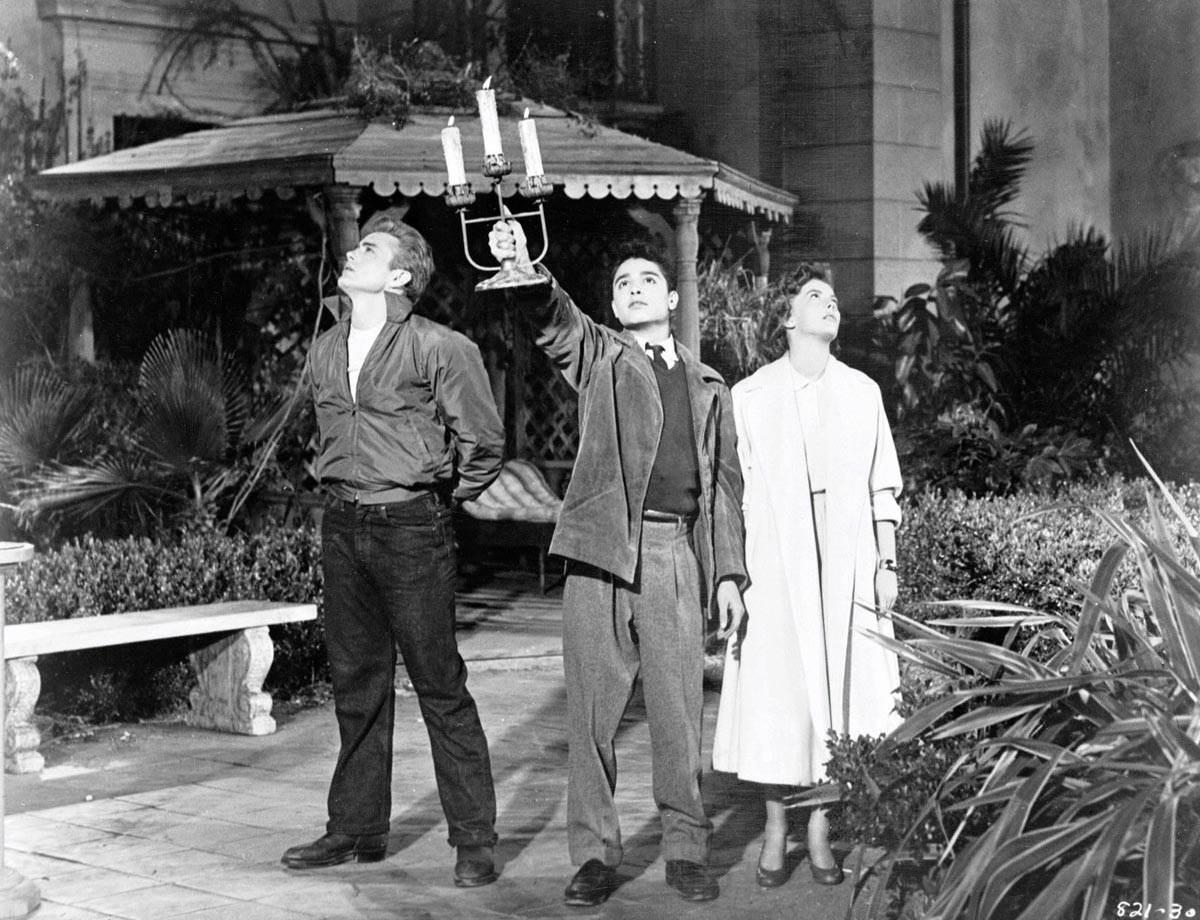
The most at risk youth of them all is Sal Mineo’s Plato, the teenager that’s been arrested for shooting puppies with his mother’s gun and is being raised by the family maid (Marietta Canty). Plato’s a seal in a shark tank, as he foreshadows the events that take place within the 24-hour framework of the film, sensing his own psychological struggles are out of reach, he tells the police “Nobody can help me.” While the film finds its rhythm once outside the police station, Nicholas Ray’s vision of middle-class kids as ticking-time-bombs is set, and it’s only a matter of time before they detonate.
The film really takes off during the school’s Griffith Observatory field trip. When “the Kids” decide to test Jim Stark at the Observatory’s overlook, the gang’s leader Buzz (the cocksure Corey Allen), finds a formidable rival when they trigger Jim’s base defense mechanism with taunts of “chicken.” After Jim bests Buzz with the knife fight, Buzz realizes Jim Stark is cooler than any of the goofs he’s been running around with, but challenges him to a “chickie run” in order to save face. It’s the scenes at the Observatory in Rebel that created the most famous practical film location in Los Angeles. While the Hollywood sign is the invitation that beckons to tourists and those seeking fame and fortune in the movies, it’s the Griffith Observatory that lords over the city with the ghosts of James Dean, Natalie Woods and Sal Mineo – an architectural wonder that is the thinking person’s landmark. Even the Observatory’s narrator in the film concludes his presentation with words that echo Jim’s state of mind – “man existing alone seems himself an episode of little consequence.”
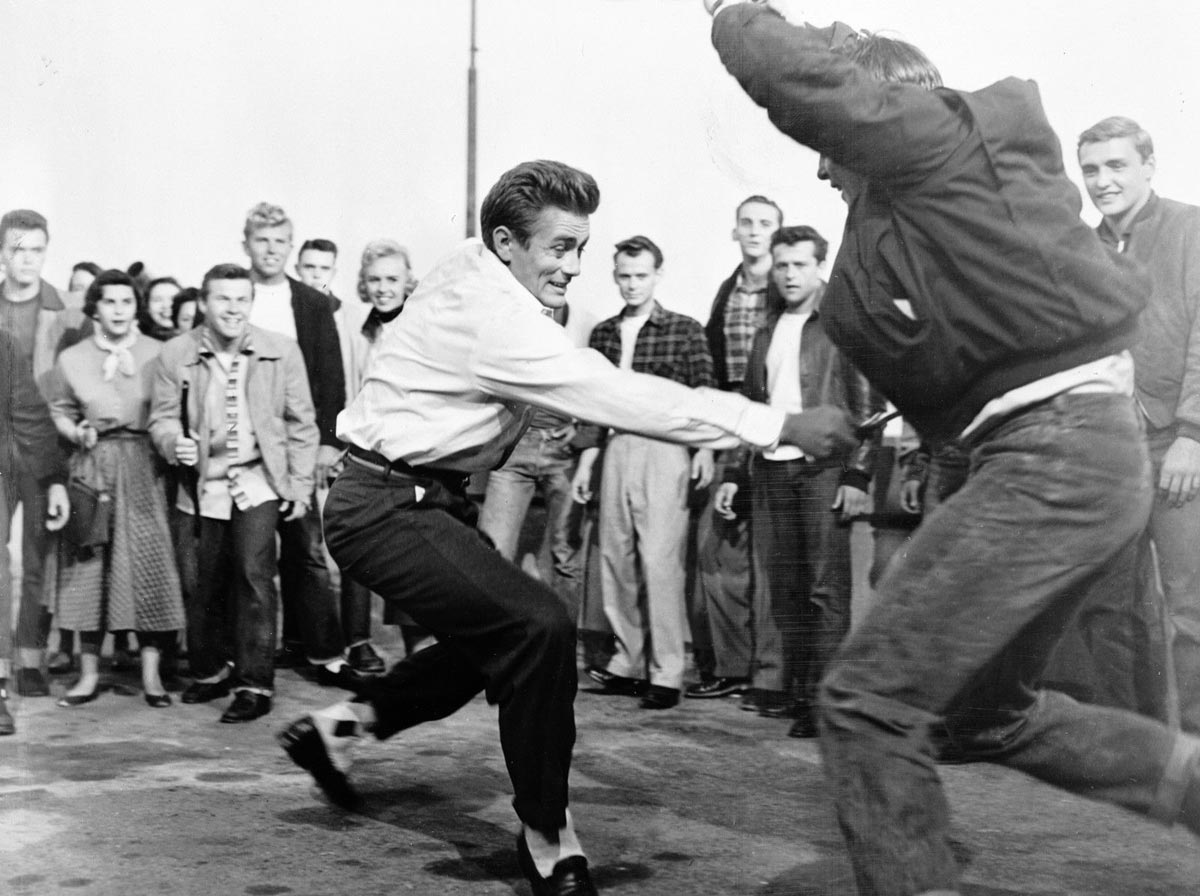
It’s not a coincidence that the year Marty McFly time travels to in Back to the Future is 1955, the year Rebel was made, and once there, the word that triggers him is “chicken” – the same word that sets off Jim Stark – “Is that supposed to mean, me?” The film’s influence runs too deep to measure, even Elvis Presley called it one of his favorite films, and he used to recite Dean’s lines. A bit of cosmic irony, since Hollywood Boulevard has long been adorned with trinkets, pictures, posters, shirts, coffee mugs, highball glasses and anything else you can think of that the likenesses of James Dean and Elvis would fit on. Like Christmas ornaments that are never taken down, in death, they became souvenir equals in Hollywood.
In the end, it was really James Dean’s performance in East of Eden that transformed Rebel, as his rising star power, and the over 400 fan letters a week addressed to Warner Brothers, moved Jack Warner to change the film to Warner Color and have Ray reshoot the black and white scenes that were already in the can. For all their interference, the studio did get this one right as switching to color made all the difference, for it’s the color red that comes to the forefront of our minds when we think of Rebel, that gives the film so much of its power. It weaves its way through the film, first in the opening credits that obscure a drunken Dean in the street playing with the toy monkey, it’s the allure of Natalie Wood’s dress in the police station, the knife fight wounds on James Dean’s white dress shirt, and the red jacket he wears when he rushes out of the house for the “chickie run”. It’s a jacket Dean refused to give back to the wardrobe department when filming was completed, and became one of the most iconic pieces of clothing in film history. The color red is the blood clot in the heart of Rebel, working its way loose until it’s dislodged in the climactic scene on the front steps of the Observatory, and the inevitable tragedy is played out.
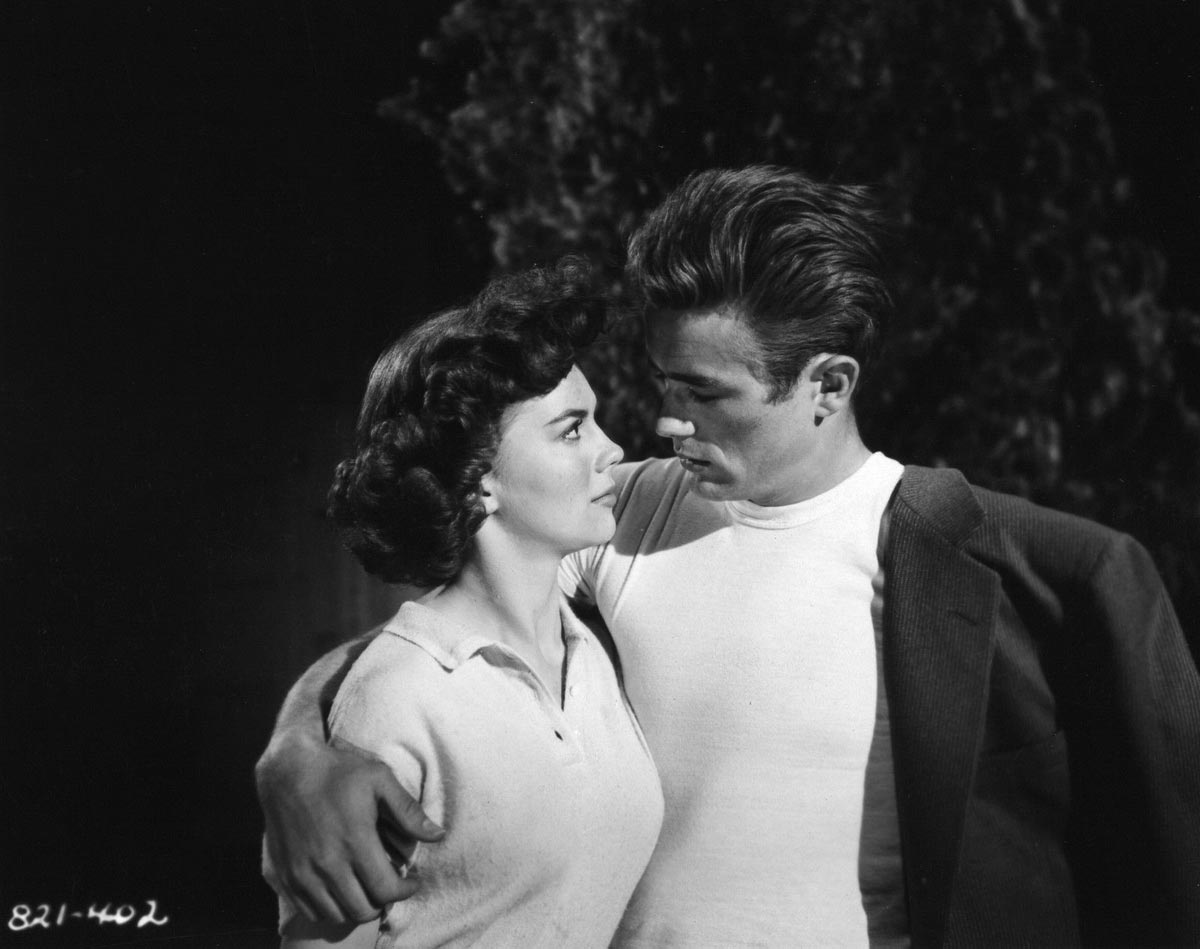
The real tragedy, however, were the untimely deaths of the film’s stars. The violent car crash that took James Dean’s life at the age of 24 while on his way to race his “Little Bastard” Porsche Spyder in Salinas. He ate his last breakfast at Farmer’s Market, just a few city blocks from the New Beverly. The murder of 37- year old Sal Mineo, stabbed to death in his West Hollywood apartment carport near Sunset Boulevard, after returning from the rehearsal of his successful play P.S. Your Cat is Dead. The mysterious drowning of Natalie Wood right off the coast of Catalina at age 43, while on a weekend boating trip with her husband Robert Wagner, and Brainstorm co-star Christopher Walken.
Rebel’s auteur Nicholas Ray lived to the age of 67, surviving his film’s stars despite his four marriages, drinking, drug and gambling addictions, and the brain cancer that ravaged his once handsome beat poet visage. Ray’s courage to create a gay character in Plato, who is befriended by the film’s protagonist James Dean, came at a time when even Natalie Wood’s parents in the film are seen in separate beds. It’s truly one of the most rebellious, if not bravest acts in film history, and something the director should be remembered for. Director Wim Wenders captured Ray’s death in the documentary Lightning Over Water, where the last images of Ray are that of a shell of a man wearing an eye patch, who wanted to be a part of filmmaking right up to his last breath.
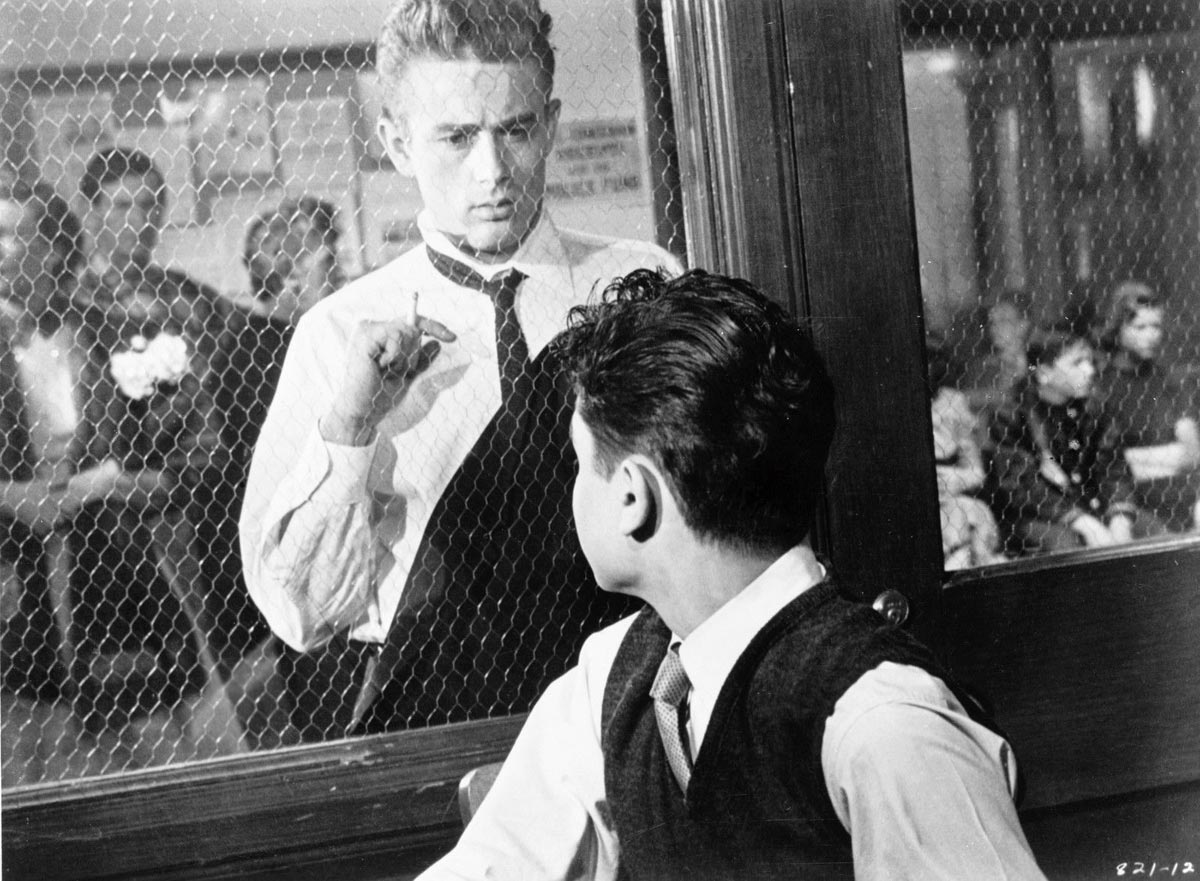
If James Dean were still alive today he’d be 86 years old, with a body of work that would’ve included westerns, romantic leading roles, some crime genre, maybe Hitchcock, one or two sci-fi-flicks, probably a Spielberg film or two, some turns behind the camera, and possibly even a guest spot on TV shows like the Rockford Files if his star faded and he needed cash. We’ll never know. And even though his friend Dennis Hopper went on to act in films with John Wayne, Paul Newman, Jack Nicholson and Marlon Brando (luminaries that Dean would’ve been compared with), it’s James Dean we romanticized (not unlike Plato in the film) into something no man or actor could ever live up to. To this day in Los Angeles, his ghost is ever present walking among us. He sits atop the Hollywood sign, he’s backstage at the Hollywood Bowl, he eats breakfast at Farmer’s Market, he people watches on Hollywood Boulevard, and he looks up at the stars at the Griffith Observatory. He’s black boots with a silver buckle, motorcycles, fast cars, the dangling cigarette and blue jeans. He’s cool in a way that uniquely fits into a fluid vision that transcends time.
James Dean left us without a career blemish in his short filmography. A pristine cinematic legacy of three classic films, with performances entombed in celluloid forever, something that only the great John Cazale shares – perfection. I’ve always felt if a writer, director or actor wants a career that ascends to greatness, then they must have at least three great films. I call it the James Dean rule. Nicholas Ray once said, “If they’re still showing Rebel Without a Cause twenty years from now, then it can stand as my epitaph.” For two nights in May, they all live again, forever young at the New Beverly.
Rebel Without a Cause screens May 12 & 13.

